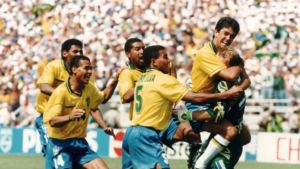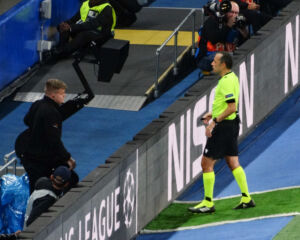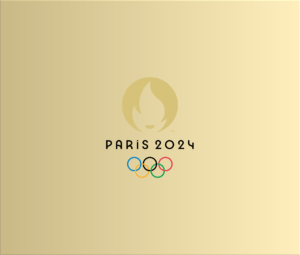Adidas’ Jabulani is the official match ball of the FIFA 2010 World Cup hosted in South Africa. The name of the ball stems from a Zulu expression Jabulani that means "rejoice." Indeed the tournament was a cause for celebration. Along with the World Cup making its first appearance on the African continent, Adidas would mark the nineteenth edition of the games with an eleventh appearance as the match ball providers.
All adult leagues, from Sunday league to the professional level, play with a size 5 FIFA Match regulation soccer ball. Learn more about the Official FIFA Match Ball Regulations.
The Jabulani is Unique
As has become representative of the World Cup Match Balls, the Jabulani brought something unique. Apart from a color scheme representative of South African culture, Adidas took over three years to design a ball that would combat issues in the 2006 World Cup Ball, Teamgeist. The Teamgiest faced criticism for having a smooth texture that caused the ball to travel at high speeds. Despite also facing backlash, the Jabulani was a marvel of ingenuity. Adidas, at the time declaring to have made the roundest ball in the history of the sport.
If you would like to go in-depth and find out more about the math behind the design of a soccer ball: check out our post on the design of the classic Adidas Telstar that changed the way the game was played with its unique stitching.
Adidas Jabulani Color
Adidas Jabulani has eleven colors that honor the eleven official languages in South Africa, the starting eleven players on a team, and commemorates Adidas’ eleventh FIFA World Cup ball.
Official FIFA 2010 World Cup match ball must:
- Have a circumference of 68.5-69.5cm (27 in)
- Weigh 440 -445g
- Water absorption 0%
- Be inflated to a pressure of 8.7-16 psi (0.6-1.1 bars)
Manufacturing Adidas Jabulani
Adidas manufactured the Jabulani with a seamless shell consisting of eight thermally bonded, EVA and TPU three-dimensional panels. The thermal-bonded covering ensured that the ball was entirely waterproof, while the three-dimensional panels helped make the ball the most round ball of its time. In addition, Adidas created a new "Grip ‘n’ Groove" technology to upgrade the smooth texture of the Teamgeist. Adidas claimed that the rough surface would improve the predictability of the ball and ensure that it flew in a straight path. The grooves would act as barriers between the ball and the boot in wet conditions, promoting consistent playability.
Controversy Surrounding the Adidas Jabulani.
Before the World Cup kicked off, there was controversy surrounding the Adidas Jabulani. Several high-profile players would come out and expressed their displeasure in the ball. Lashing out at how difficult the Jabulani was to handle, and contrary to Adidas claims, just how unpredictable the flight partan of the ball was.
"The new model is absolutely inadequate and I think it’s shameful letting play such an important competition, where a lot of champions take part, with a ball like this"
"The balls have been doing anything but staying in my gloves."
"The ball is very complicated for the goalkeepers and for us [forwards]."
"For sure the guy who designed this ball never played football, but there is nothing we can do; we have to play with it."
"The football is horrible, It is like one of those you buy in the supermarket."
"The new ball is a disaster for strikers, It’s fast and it weighs less than a normal ball."
Adidas Responded to the Players
Adidas quickly responded to the player’s annoyance with the ball. As spokesperson Thomas van Schaik would issue several statements in defense of the Jabulani and declaring that the ball had been in use for several months before the tournament with no complaints. The Adidas spokesperson assured the press that the issue would boil over once the games commenced.
FIFA Support Use of Jabulani
FIFA would also issue statements fully supporting the use of the Jabulani adding, that they had distributed the ball to the participating countries earlier that year. Along with the ball having undergone a trial period at Real Madrid, Bayern Munich, and Chelsea.
Jabulani Took on Center Stage at Soccer City
On June 11, the Jabulani took on center stage at Soccer City for the curtain-raiser of the FIFA 2010 World Cup match between South Africa and Mexico. An atmosphere beaming with excitement as the world anticipated the first World Cup match to kick off on African soil. Not to mention, most of the world would hear for the first time the chants of the South African people unmissable by the sounds of the vuvuzelas.
Dramatic Display
The game would set off dramatically, presenting a series of miss-timed chances coupled with a disallowed goal that would have put the visitors ahead. By halftime, both defenses had escaped the horrors told of the Jabulani and returned to the dressing room with the game standing at nil-nil.
A Second Half of Wonder
The second half would kick off similarly as fans began to wonder if the players would ever adjust to the Jabulani and start to convert chances. The host nation would take on the initiative in the 54′ minutes of the game. Left-winger Lawrence Siphiwe Tshabalala would make a darting run from within his half as his pace would prove too much for Ricardo Osorio. The winger would run past the visitors’ center-back after the halfway mark before latching onto a perfectly timed through ball that slid across the surface to meet him at the top of the eighteen yard box.
Free On Goal
Tshabalala would decisively take a touch into the opposition’s box, leaving him free on goal. With only the goalie to beat, the then Kaizer Chiefs winger unleashed an immaculate strike. Tshabalala would hit the ball swiftly and truly off his left boot, causing the Jabulani to render the Mexican goalie Óscar Pérez hopeless. And fly into the top right corner of the net, all to the delight of the host nation.
Players Try Adjusting to the Ball
Despite the many players’ efforts at adjusting to the ball, it just wasn’t sticking. Yet, the Mexican team grew in confidence as they pushed on for an equalizer. A chance for the South American team came from a corner as the game grew older. The Mexicans elected to take a short corner in a move that looked unchoreographed. The ball bounced away from the Mexican players attempting to play a 1-2 on the left flank. Yet, Andrés Guardado quickly recovered the ball to take advantage of the host side’s sluggish defending.
Miscued Header
Guardado wiped the Jabulani over Tsepo Masilela, who had miscued his header as the ball traveled into the South Africas’ box. With no defensive cover, the ball would fall kindly for the Mexicans. Rafael Márquez was the first to pounce as the defensive midfielder put the visitors’ level in the 78′ minute with a strike that neither he nor the goalkeeper expected. The striker barely got complete contact on the ball as it shaved the tip of his right boot to beat the keeper on his near post.
Spoil the Party
With the visitors unable to completely spoil the party by the final whistle, the game would remain a drooling spectacle and set the tone for the remainder of the 2010 FIFA World Cup tournament. And a ball that would expect to shape the destiny of the games.
FIFA World Cup Goals 2002, 2006, 2010, 2014, 2018
| Overall Goals Scored | Average Goals Scored per Match | |
| 2002 | 161 | 2.52 |
| 2006 | 147 | 2.3 |
| 2010 | 145 | 2.27 |
| 2014 | 171 | 2.67 |
| 2018 | 169 | 2.64 |
This table represents the total number of goals at the World Cup and the average goals scored per game. FIFA World Cup 2002, 2006, 2010, 2014, 2018.
NASA Aerospace Engineer Studied the Jabulani
NASA aerospace engineer Rabi Mehta studied the Jabulani in 2010, hypothesizing that Adidas had attempted to improve on the 2006 Teamgeist. And in doing so, they had managed to produce the fastest ball. The newly implemented eight thermally-bonded panels coupled with the grip n groove technology on the Jabulani would allow the ball to travel at speeds close to 55 mph. This speed was 10 miles faster than the 2006 world cup ball and 20 times faster than the Classic 32 panel ball.
Physicists and Astronomers Confirm Jabulani’s Behavior
A group of physicists and astronomers from Sixty Symbols produced a study confirming the Jabulani’s behavior. Their findings would determine that the ball traveled faster and require players to adjust their technique.
Adidas Designed the Jabulani With Less Drag
Adidas designed the Jabulani to have less drag, inevitably making it faster. As a ball travels through the air, it is affected by aerodynamic forces that determine its final destination. Considering that air is fluid, it creates drag and lift forces on a Jabulani. Lift is the perpendicular force that directly opposes the ball’s weight and holds it in the air. Drag, on the other hand, has two components, namely, frictional and pressure drag. Yet, for a sphere, pressure drag is the more significant—pressure drag occurs due to the pressure difference between the front and back of an object.
A Ball in Turbulent Flow
Unlike Laminar Flow, a ball during a match creates drag forces that result in the object being in a Turbulent Flow state. When an Adidas Jabulani is in flight, the air spreads over it, going in the opposite direction of its trajectory. The flow then tries to stay attached to the curves of the ball. However, static pressure increases against the flow, causing flow separation. This adverse pressure effect happens to the Jabulani at degrees larger than a hundred twenty. The air forms pockets of vortices behind it. Not only does the drag force aids in the change of pressure around the ball, but it also creates an area of low pressure behind it called the separation region.
Grooves on Jabulani Like Vortex Generators
Like vortex generators on the wings of an aircraft, the grooves on the Jabulani aid the delay of flow separation, reduce drag, lower unwanted vibration and allow the ball to travel further. It is important to note how the turbulence behind the ball affects its journey, bearing the responsibility to Conservation of Momentum. When a player strikes a ball there, momentum gets transferred to the ball as Kinetic energy. As a result, the ball produces drag that slows it down as it glides through the air.
Bouncy Ball
Although a factor in the ball’s production, neither the players nor Adidas mentioned just how bouncy the ball was. Physics refers to the "bounciness" of a ball as the coefficient of restitution (COR). COR is the relation of the ball’s velocity to the height it returns to after contact with a surface. The Jabulani bounces back about seventy percent of the way, essentially declaring it a very bouncy ball.




















